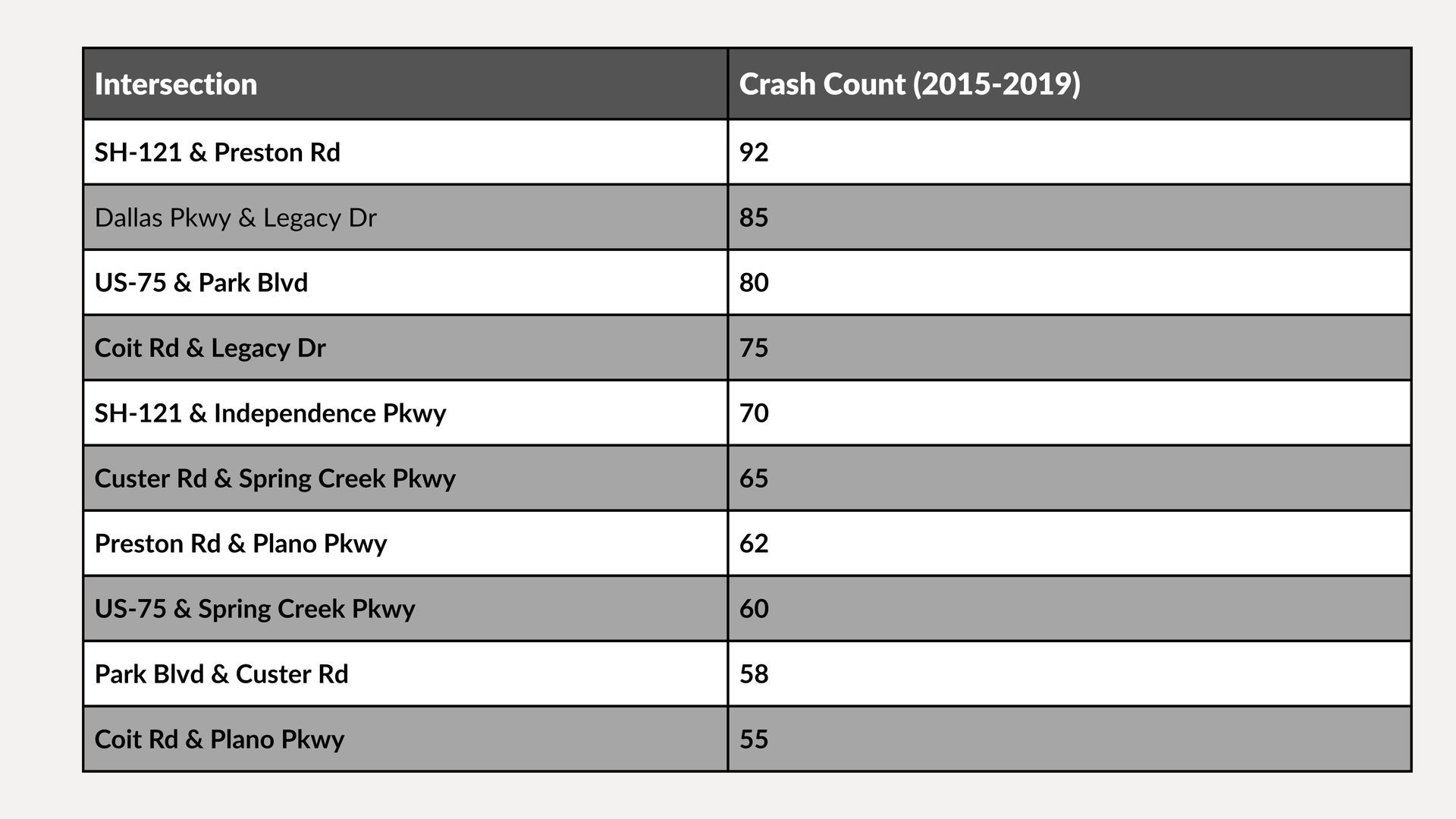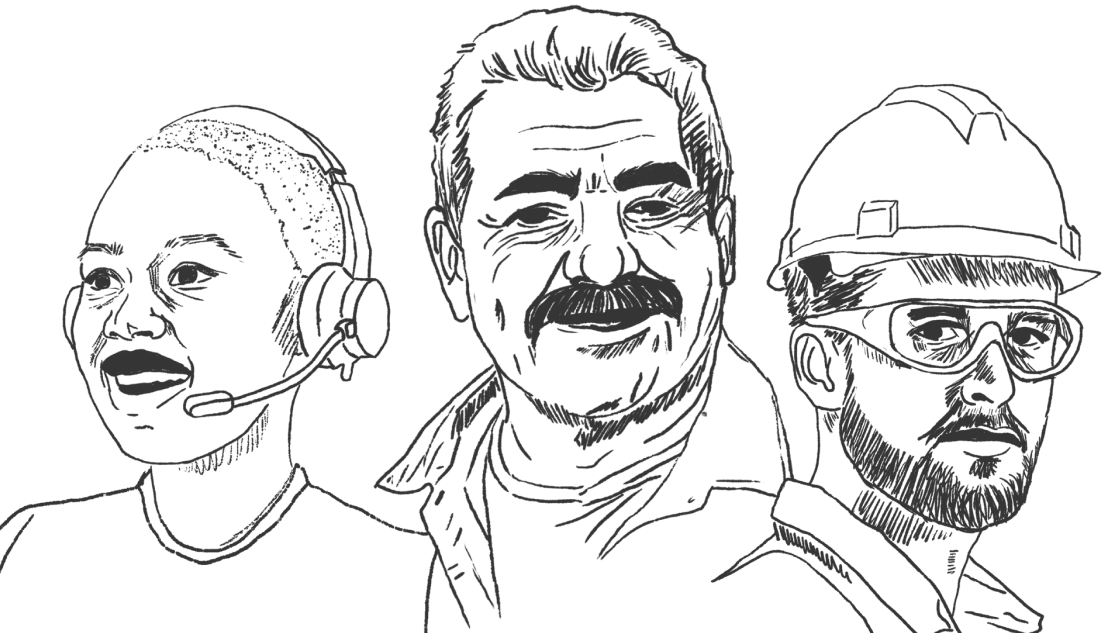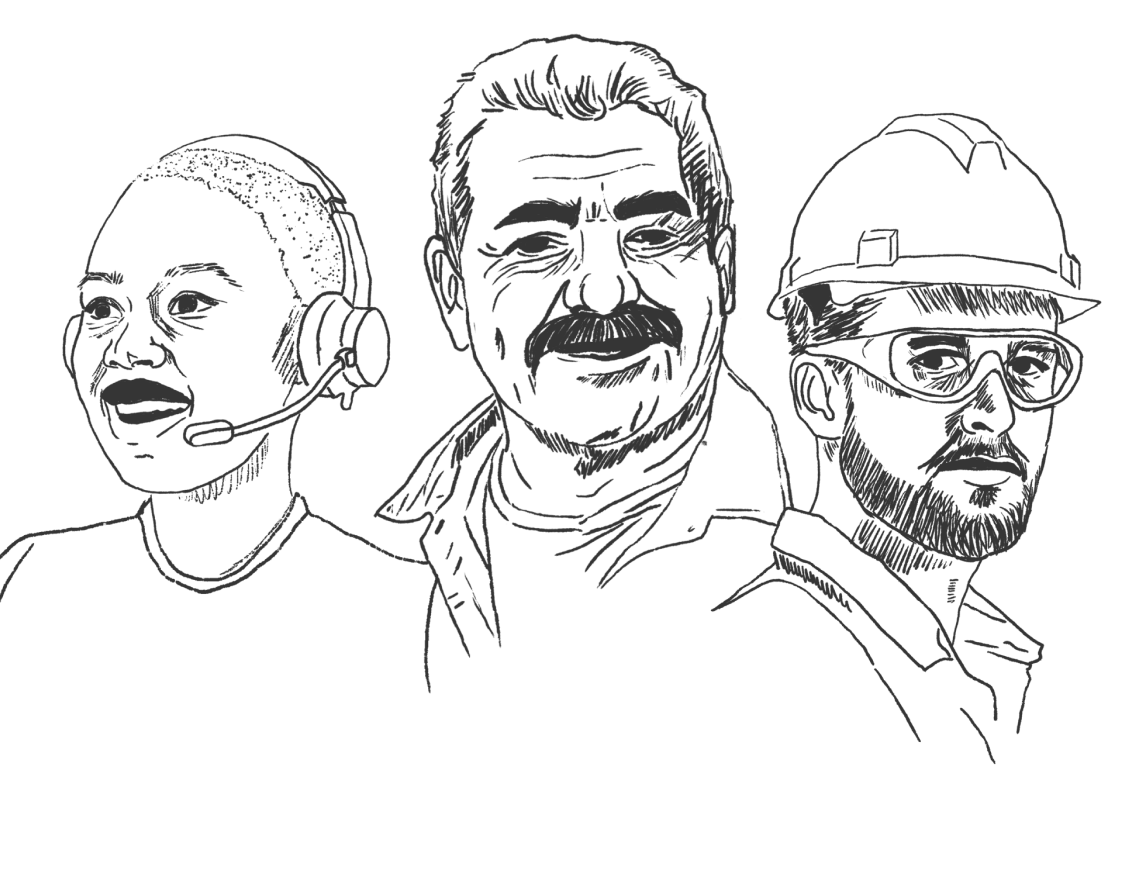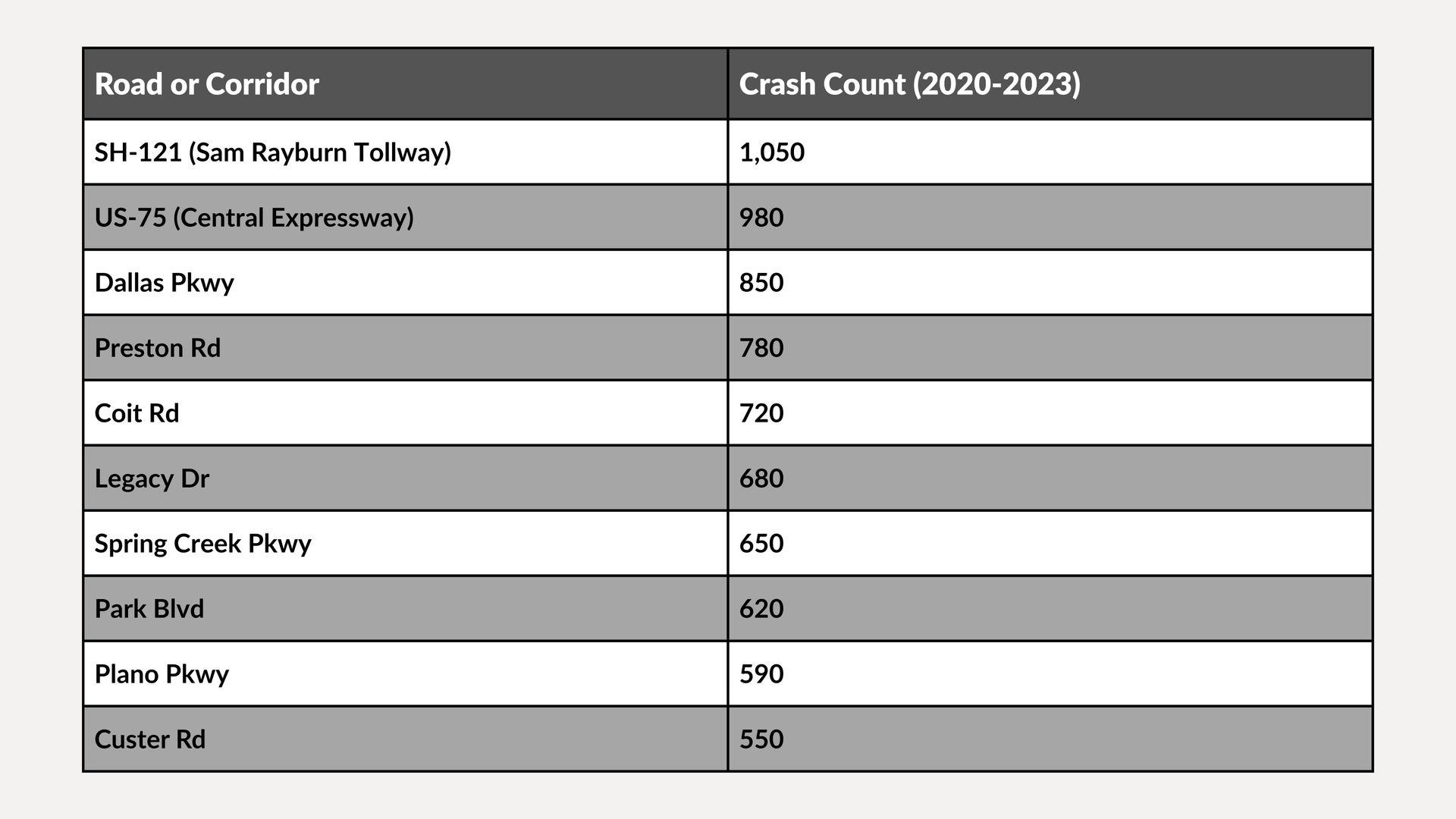The Most Dangerous Roads to Drive in Plano
Plano’s roads are some of the busiest in North Texas, with thousands of drivers commuting every day for work, school, and errands. As traffic increases, so do the chances of accidents, and some of these accidents can cause serious injuries or even fatalities. To understand where and why these crashes are happening, we dug into data from multiple trusted sources, including the Texas Department of Transportation Crash Records Information System (CRIS) (TxDOT CRIS), Collin County crash reports, the Texas Department of Transportation Traffic Safety Data Portal, the Plano Open Data Portal, and local news outlets. Our goal is to bring this data to life, making it accessible and actionable for Plano drivers who want to stay safe on the road.
Knowing where, when, and why accidents occur is key to preventing them.
Key Takeaways
- Most Dangerous Intersection: SH-121 & Preston Rd, with 92 crashes, due to high-speed traffic and commercial density.
- Fatality Hotspots: SH-121 & Preston Rd with four fatal crashes.
- Peak Crash Times: 7–9 AM and 3–8 PM (rush hours), with late-night weekend crashes (6 PM–midnight) linked to alcohol (16% of fatalities).
- Top Contributing Factors: Failure to control speed, distracted driving, and failure to yield the right of way.
Common Causes of Accidents in Plano, Texas
Plano’s growing traffic volume has made safe driving more critical than ever. As the city expands and more drivers share the road, the risk of accidents continues to rise, especially during peak commuting hours and in high-density commercial zones. According to local and state data, the three leading causes of crashes in the city are speeding, failure to yield, and impaired driving. Speeding not only reduces a driver’s reaction time but also significantly increases the force of impact, often resulting in more severe injuries and property damage. Failure to yield (particularly at intersections, roundabouts, and while merging) remains a frequent and preventable cause of collisions, reflecting the importance of patience and vigilance behind the wheel. While impaired driving may account for a smaller portion of overall accidents, these incidents are disproportionately deadly and often occur during late-night hours or weekends. By understanding the root causes and working together, Plano can move toward a future where its roads are not only efficient but safe for all who use them.
Most Dangerous Intersections in Plano, TX
By analyzing crash data from the
TxDOT CRIS database, along with reports from trusted local sources like
Collin County city crash reports, we’ve pinpointed the intersections in Plano where crashes happen most often. These hotspots are commonly found in high-traffic areas, near freeway entrances, or in areas with concentrated commercial activity.

Plano’s Most Crash-Prone Roads and Corridors
Beyond individual intersections, the Plano Open Data Portal provides valuable insight into crash-prone corridors across the city. These high-risk road segments tend to coincide with areas of increased congestion, frequent lane changes, and nearby commercial developments. Understanding crash patterns along these corridors is crucial for implementing effective safety measures, including roadway redesigns, traffic calming initiatives, and targeted public awareness campaigns tailored to the specific challenges drivers encounter on these routes.
Locations with the Most Fatal Crashes
Using data from TxDOT CRIS and the National Highway Traffic Safety Administration’s Fatality Analysis Reporting System (FARS), we have identified the locations in Plano with the highest number of fatal crashes from 2020 to 2023. These sites are typically high-speed corridors or intersections with significant pedestrian activity, highlighting areas that require increased safety focus.

Losing someone you love in a car accident is a heartbreaking experience that no family should have to endure. We know how unfair and challenging this journey can be, and we want to stand by your side as you seek justice and closure. Reach out to us to schedule a confidential consultation, and let us handle the complexities of the legal process while you take the time you need to recover and heal.
Time of Day Car Accidents are Most Prone in Plano
Car accidents in Plano are most frequent during peak rush hours, specifically between 7–9 AM and 3–8 PM, when the city’s roads experience heavy commuter traffic. During these times, congestion, hurried driving, and frequent lane changes increase the likelihood of collisions.
Additionally, late-night crashes, especially between 6 PM and midnight on weekends, are often linked to impaired driving, with alcohol involved in approximately 16% of fatal accidents. This spike occurs because fewer drivers are on the road; however, those who are may be under the influence, driving at higher speeds, or less alert, all of which significantly increase the risk of severe crashes during these hours.
To stay safe during these high-risk times, consider the following tips:
- Plan your trips to avoid peak rush hours whenever possible.
- Allow extra travel time to reduce the temptation to speed or drive aggressively.
- Stay focused and avoid distractions, such as texting or adjusting your devices, while driving.
- Always wear your seatbelt and maintain a safe following distance to give yourself time to react.
- Never drive under the influence of alcohol or drugs; if you plan to drink, arrange for a sober ride.
- Be extra cautious at intersections and when merging, as these are common crash points during busy periods.
By adopting these habits, Plano drivers can reduce their risk and help keep the city’s roads safer for everyone.
Take Action Today for a Safer Tomorrow
The data is precise: speeding, failure to yield, and impaired driving continue to pose a threat to Plano’s road safety. But change is possible - through awareness, responsible driving, and community collaboration. Whether you’re a driver, policymaker, or advocate, your role matters. And if a crash has impacted you, let us take on the legal burden so you can focus on recovery. Together, we can build safer streets and stronger communities.
Request a Consultation
Other Practice Areas








